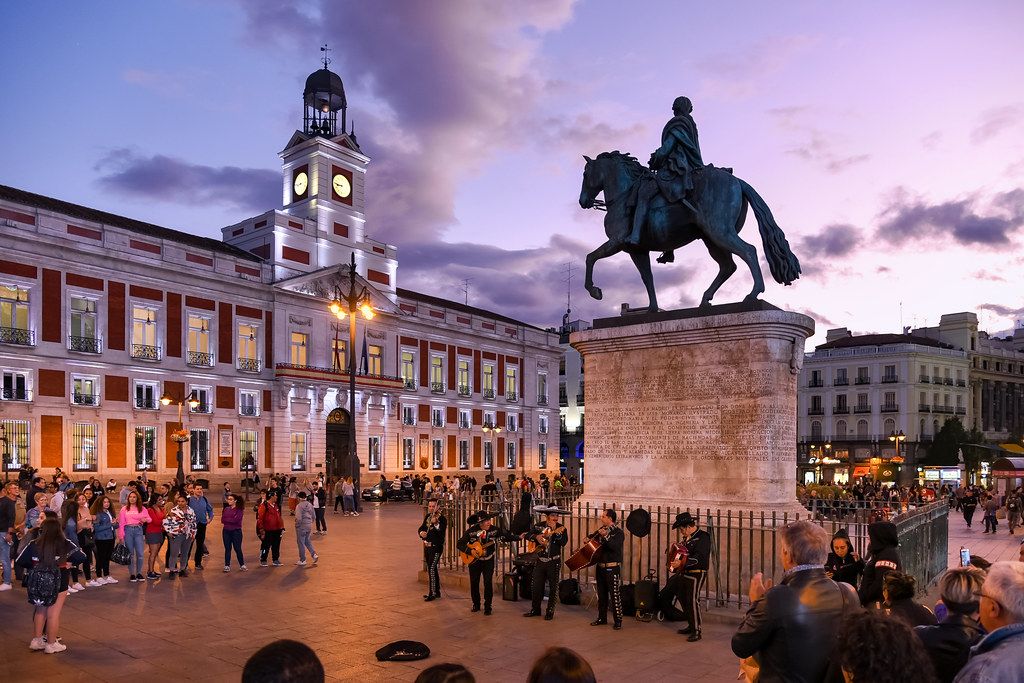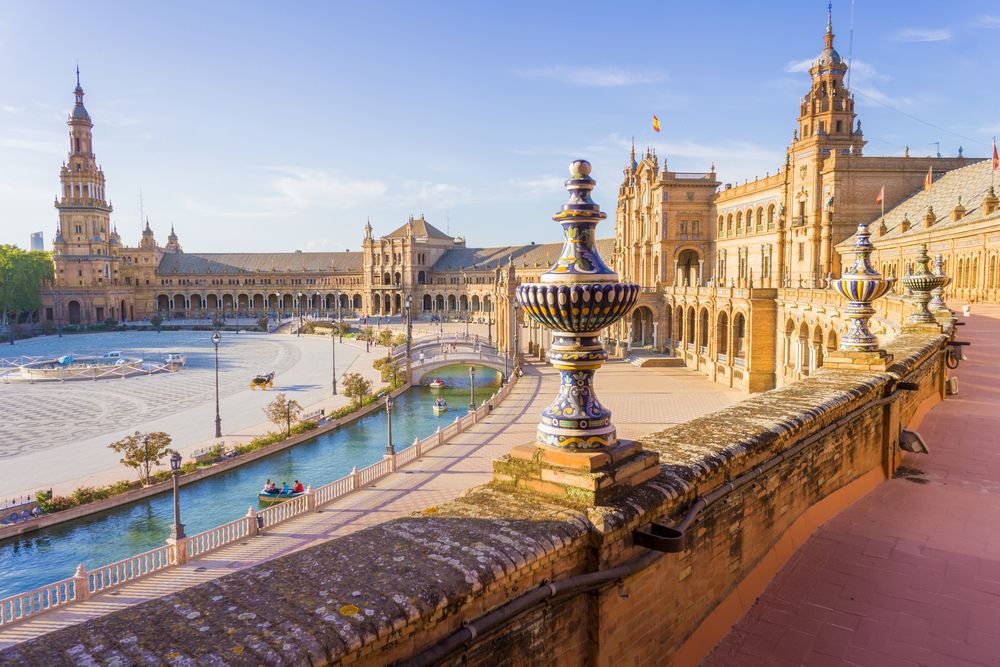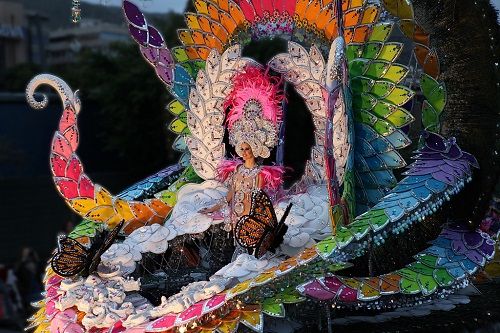Learn more about Spanish traditions around the world in countries like Spain, Colombia, Argentina... Discover curiosities about these countries
Spanish Culture: Traditions
Browse this section to discover more about Spanish traditions in countries like Mexico, Argentina, or Spain. Learn about greetings, games and food customs in the Spanish-speaking world.
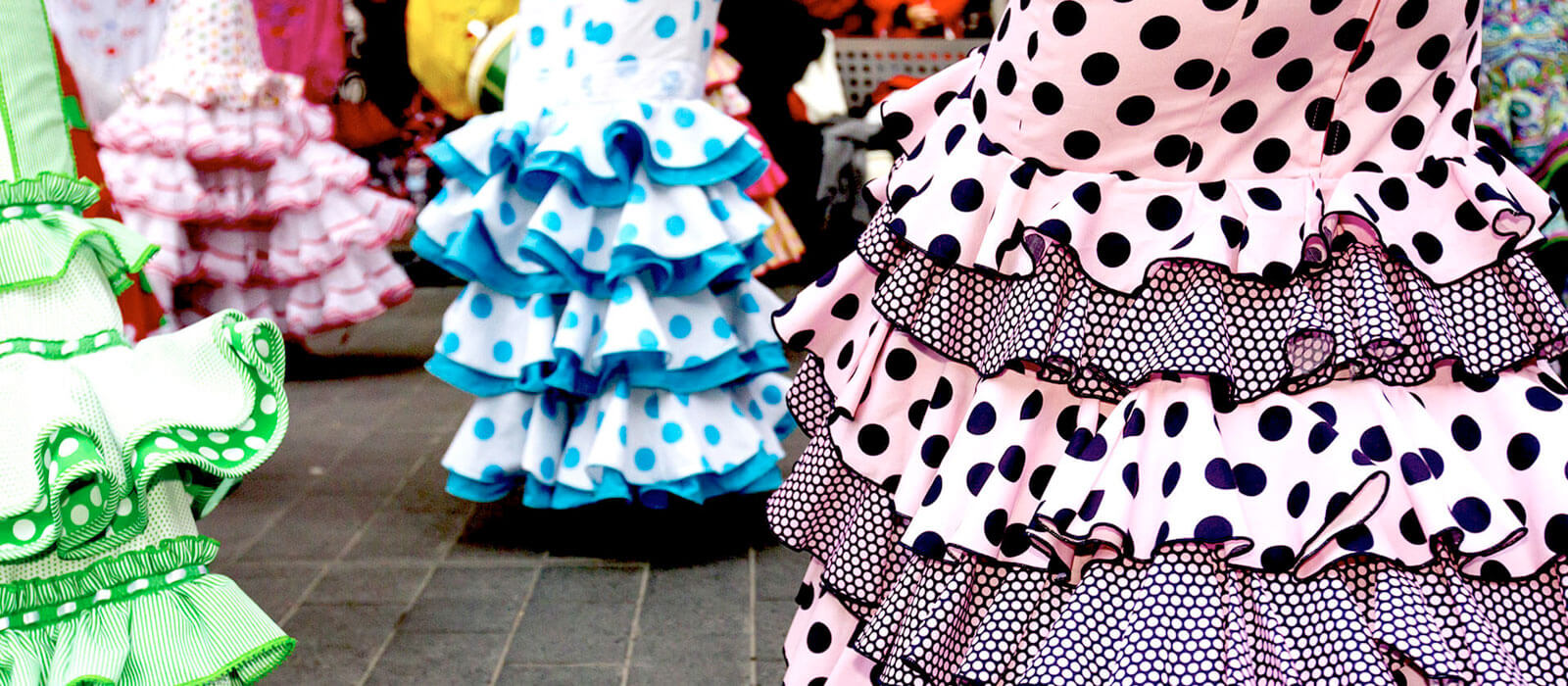
spanish traditions
Traditions
Discover more
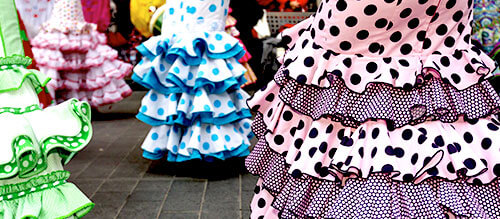
<svg xmlns="http://www.w3.org/2000/svg" width="57" height="57" viewBox="0 0 57 57"><metadata><?xpacket begin="" id="W5M0MpCehiHzreSzNTczkc9d"?><x:xmpmeta xmlns:x="adobe:ns:meta/" x:xmptk="Adobe XMP Core 5.6-c138 79.159824, 2016/09/14-01:09:01"><rdf:RDF xmlns:rdf="http://www.w3.org/1999/02/22-rdf-syntax-ns#"><rdf:Description rdf:about=""/></rdf:RDF></x:xmpmeta><?xpacket end="w"?></metadata><defs><style> .cls-1 { fill: #d2283d; fill-rule: evenodd; }</style></defs><path class="cls-1" d="M830.68,1105.66h3.94a0.92,0.92,0,1,0,0-1.84h-3.94A0.92,0.92,0,1,0,830.68,1105.66Zm30.71,8.38a2.009,2.009,0,0,1-1.064-2.08l1.238-7.58a3.87,3.87,0,0,0-3.828-4.5h-2.543a8.817,8.817,0,0,0-8.754-7.88h-7.88a8.817,8.817,0,0,0-8.754,7.88h-2.543a3.882,3.882,0,0,0-3.828,4.5l1.246,7.63a1.946,1.946,0,0,1-1.026,2.01,18.656,18.656,0,0,0,6.871,34.86,19.591,19.591,0,0,0,2.155.12,18.43,18.43,0,0,0,9.83-2.81,18.483,18.483,0,0,0,7.713,2.69,19.591,19.591,0,0,0,2.155.12,18.448,18.448,0,0,0,12.408-4.75A18.649,18.649,0,0,0,861.39,1114.04Zm-8.059-14.16h-2.078a8.8,8.8,0,0,0-3.1-5.82A6.973,6.973,0,0,1,853.331,1099.88Zm-10.2,4.5,1.246,7.63a1.949,1.949,0,0,1-1.026,2.01c-0.289.15-.574,0.32-0.856,0.5-0.264-.17-0.531-0.33-0.8-0.48a2.009,2.009,0,0,1-1.064-2.08l1.237-7.58a3.881,3.881,0,0,0-3.827-4.5h-2.432a6.955,6.955,0,0,1,13.786,0H846.96A3.881,3.881,0,0,0,843.133,1104.38Zm-6.285-10.32a8.8,8.8,0,0,0-3.1,5.82h-2.078A6.973,6.973,0,0,1,836.848,1094.06Zm-11.134,8.38a2.04,2.04,0,0,1,1.548-.71h10.776a2.022,2.022,0,0,1,2,2.35l-1.237,7.58a3.781,3.781,0,0,0,.523,2.59l-6.679,4.18-6.664-4.17a3.7,3.7,0,0,0,.517-2.54l-1.246-7.64A2.029,2.029,0,0,1,825.714,1102.44Zm5.014,44.6a16.8,16.8,0,0,1-12.84-24.72,16.9,16.9,0,0,1,6.658-6.69c0.026-.01.051-0.03,0.076-0.04l7.538,4.71a0.926,0.926,0,0,0,.979,0l7.54-4.72c0.039,0.03.077,0.05,0.116,0.08A16.8,16.8,0,0,1,830.728,1147.04Zm16.391-28.45a13.024,13.024,0,0,1,5.229-1.11,12.865,12.865,0,1,1-5.222,24.63A18.635,18.635,0,0,0,847.119,1118.59Zm16.435,24.28a16.667,16.667,0,0,1-13.128,4.17,16.471,16.471,0,0,1-6.261-2.02c0.314-.25.622-0.5,0.923-0.77,0.256-.23.5-0.47,0.746-0.71a14.708,14.708,0,1,0-.008-26.38,18.991,18.991,0,0,0-1.668-1.48c0.029-.02.058-0.03,0.087-0.05a3.8,3.8,0,0,0,1.956-3.91l-1.246-7.64a2.022,2.022,0,0,1,2-2.35h2.5v3.01a0.924,0.924,0,0,0,1.847,0v-3.01H853.4v3.01a0.923,0.923,0,0,0,1.846,0v-3.01h2.5a2.022,2.022,0,0,1,2,2.35l-1.237,7.58a3.9,3.9,0,0,0,1.99,4A16.793,16.793,0,0,1,863.554,1142.87Z" transform="translate(-814 -1092)"/></svg>

 <svg xmlns="http://www.w3.org/2000/svg" width="57" height="57" viewBox="0 0 57 57"><metadata><?xpacket begin="" id="W5M0MpCehiHzreSzNTczkc9d"?><x:xmpmeta xmlns:x="adobe:ns:meta/" x:xmptk="Adobe XMP Core 5.6-c138 79.159824, 2016/09/14-01:09:01"><rdf:RDF xmlns:rdf="http://www.w3.org/1999/02/22-rdf-syntax-ns#"><rdf:Description rdf:about=""/></rdf:RDF></x:xmpmeta><?xpacket end="w"?></metadata><defs><style> .cls-1 { fill: #d2283d; fill-rule: evenodd; }</style></defs><path class="cls-1" d="M830.68,1105.66h3.94a0.92,0.92,0,1,0,0-1.84h-3.94A0.92,0.92,0,1,0,830.68,1105.66Zm30.71,8.38a2.009,2.009,0,0,1-1.064-2.08l1.238-7.58a3.87,3.87,0,0,0-3.828-4.5h-2.543a8.817,8.817,0,0,0-8.754-7.88h-7.88a8.817,8.817,0,0,0-8.754,7.88h-2.543a3.882,3.882,0,0,0-3.828,4.5l1.246,7.63a1.946,1.946,0,0,1-1.026,2.01,18.656,18.656,0,0,0,6.871,34.86,19.591,19.591,0,0,0,2.155.12,18.43,18.43,0,0,0,9.83-2.81,18.483,18.483,0,0,0,7.713,2.69,19.591,19.591,0,0,0,2.155.12,18.448,18.448,0,0,0,12.408-4.75A18.649,18.649,0,0,0,861.39,1114.04Zm-8.059-14.16h-2.078a8.8,8.8,0,0,0-3.1-5.82A6.973,6.973,0,0,1,853.331,1099.88Zm-10.2,4.5,1.246,7.63a1.949,1.949,0,0,1-1.026,2.01c-0.289.15-.574,0.32-0.856,0.5-0.264-.17-0.531-0.33-0.8-0.48a2.009,2.009,0,0,1-1.064-2.08l1.237-7.58a3.881,3.881,0,0,0-3.827-4.5h-2.432a6.955,6.955,0,0,1,13.786,0H846.96A3.881,3.881,0,0,0,843.133,1104.38Zm-6.285-10.32a8.8,8.8,0,0,0-3.1,5.82h-2.078A6.973,6.973,0,0,1,836.848,1094.06Zm-11.134,8.38a2.04,2.04,0,0,1,1.548-.71h10.776a2.022,2.022,0,0,1,2,2.35l-1.237,7.58a3.781,3.781,0,0,0,.523,2.59l-6.679,4.18-6.664-4.17a3.7,3.7,0,0,0,.517-2.54l-1.246-7.64A2.029,2.029,0,0,1,825.714,1102.44Zm5.014,44.6a16.8,16.8,0,0,1-12.84-24.72,16.9,16.9,0,0,1,6.658-6.69c0.026-.01.051-0.03,0.076-0.04l7.538,4.71a0.926,0.926,0,0,0,.979,0l7.54-4.72c0.039,0.03.077,0.05,0.116,0.08A16.8,16.8,0,0,1,830.728,1147.04Zm16.391-28.45a13.024,13.024,0,0,1,5.229-1.11,12.865,12.865,0,1,1-5.222,24.63A18.635,18.635,0,0,0,847.119,1118.59Zm16.435,24.28a16.667,16.667,0,0,1-13.128,4.17,16.471,16.471,0,0,1-6.261-2.02c0.314-.25.622-0.5,0.923-0.77,0.256-.23.5-0.47,0.746-0.71a14.708,14.708,0,1,0-.008-26.38,18.991,18.991,0,0,0-1.668-1.48c0.029-.02.058-0.03,0.087-0.05a3.8,3.8,0,0,0,1.956-3.91l-1.246-7.64a2.022,2.022,0,0,1,2-2.35h2.5v3.01a0.924,0.924,0,0,0,1.847,0v-3.01H853.4v3.01a0.923,0.923,0,0,0,1.846,0v-3.01h2.5a2.022,2.022,0,0,1,2,2.35l-1.237,7.58a3.9,3.9,0,0,0,1.99,4A16.793,16.793,0,0,1,863.554,1142.87Z" transform="translate(-814 -1092)"/></svg>
<svg xmlns="http://www.w3.org/2000/svg" width="57" height="57" viewBox="0 0 57 57"><metadata><?xpacket begin="" id="W5M0MpCehiHzreSzNTczkc9d"?><x:xmpmeta xmlns:x="adobe:ns:meta/" x:xmptk="Adobe XMP Core 5.6-c138 79.159824, 2016/09/14-01:09:01"><rdf:RDF xmlns:rdf="http://www.w3.org/1999/02/22-rdf-syntax-ns#"><rdf:Description rdf:about=""/></rdf:RDF></x:xmpmeta><?xpacket end="w"?></metadata><defs><style> .cls-1 { fill: #d2283d; fill-rule: evenodd; }</style></defs><path class="cls-1" d="M830.68,1105.66h3.94a0.92,0.92,0,1,0,0-1.84h-3.94A0.92,0.92,0,1,0,830.68,1105.66Zm30.71,8.38a2.009,2.009,0,0,1-1.064-2.08l1.238-7.58a3.87,3.87,0,0,0-3.828-4.5h-2.543a8.817,8.817,0,0,0-8.754-7.88h-7.88a8.817,8.817,0,0,0-8.754,7.88h-2.543a3.882,3.882,0,0,0-3.828,4.5l1.246,7.63a1.946,1.946,0,0,1-1.026,2.01,18.656,18.656,0,0,0,6.871,34.86,19.591,19.591,0,0,0,2.155.12,18.43,18.43,0,0,0,9.83-2.81,18.483,18.483,0,0,0,7.713,2.69,19.591,19.591,0,0,0,2.155.12,18.448,18.448,0,0,0,12.408-4.75A18.649,18.649,0,0,0,861.39,1114.04Zm-8.059-14.16h-2.078a8.8,8.8,0,0,0-3.1-5.82A6.973,6.973,0,0,1,853.331,1099.88Zm-10.2,4.5,1.246,7.63a1.949,1.949,0,0,1-1.026,2.01c-0.289.15-.574,0.32-0.856,0.5-0.264-.17-0.531-0.33-0.8-0.48a2.009,2.009,0,0,1-1.064-2.08l1.237-7.58a3.881,3.881,0,0,0-3.827-4.5h-2.432a6.955,6.955,0,0,1,13.786,0H846.96A3.881,3.881,0,0,0,843.133,1104.38Zm-6.285-10.32a8.8,8.8,0,0,0-3.1,5.82h-2.078A6.973,6.973,0,0,1,836.848,1094.06Zm-11.134,8.38a2.04,2.04,0,0,1,1.548-.71h10.776a2.022,2.022,0,0,1,2,2.35l-1.237,7.58a3.781,3.781,0,0,0,.523,2.59l-6.679,4.18-6.664-4.17a3.7,3.7,0,0,0,.517-2.54l-1.246-7.64A2.029,2.029,0,0,1,825.714,1102.44Zm5.014,44.6a16.8,16.8,0,0,1-12.84-24.72,16.9,16.9,0,0,1,6.658-6.69c0.026-.01.051-0.03,0.076-0.04l7.538,4.71a0.926,0.926,0,0,0,.979,0l7.54-4.72c0.039,0.03.077,0.05,0.116,0.08A16.8,16.8,0,0,1,830.728,1147.04Zm16.391-28.45a13.024,13.024,0,0,1,5.229-1.11,12.865,12.865,0,1,1-5.222,24.63A18.635,18.635,0,0,0,847.119,1118.59Zm16.435,24.28a16.667,16.667,0,0,1-13.128,4.17,16.471,16.471,0,0,1-6.261-2.02c0.314-.25.622-0.5,0.923-0.77,0.256-.23.5-0.47,0.746-0.71a14.708,14.708,0,1,0-.008-26.38,18.991,18.991,0,0,0-1.668-1.48c0.029-.02.058-0.03,0.087-0.05a3.8,3.8,0,0,0,1.956-3.91l-1.246-7.64a2.022,2.022,0,0,1,2-2.35h2.5v3.01a0.924,0.924,0,0,0,1.847,0v-3.01H853.4v3.01a0.923,0.923,0,0,0,1.846,0v-3.01h2.5a2.022,2.022,0,0,1,2,2.35l-1.237,7.58a3.9,3.9,0,0,0,1.99,4A16.793,16.793,0,0,1,863.554,1142.87Z" transform="translate(-814 -1092)"/></svg>




